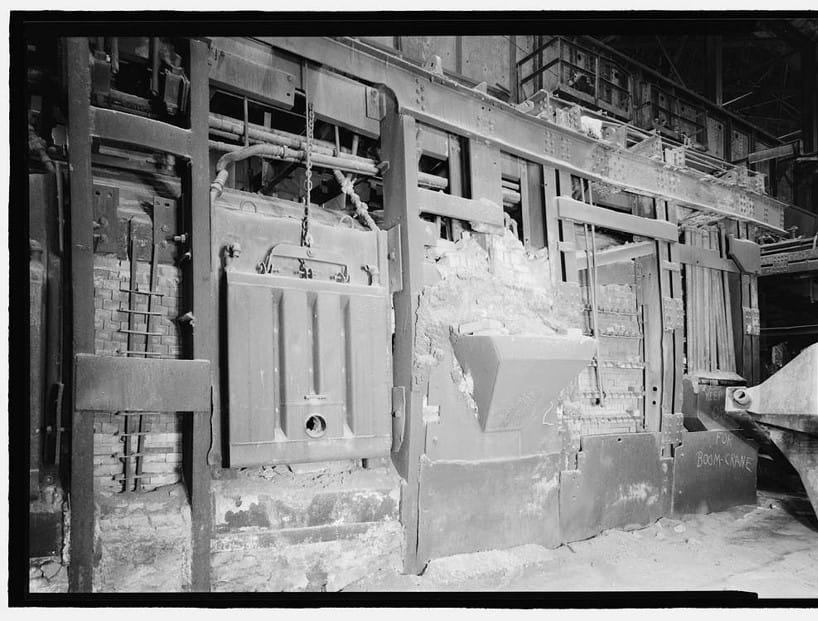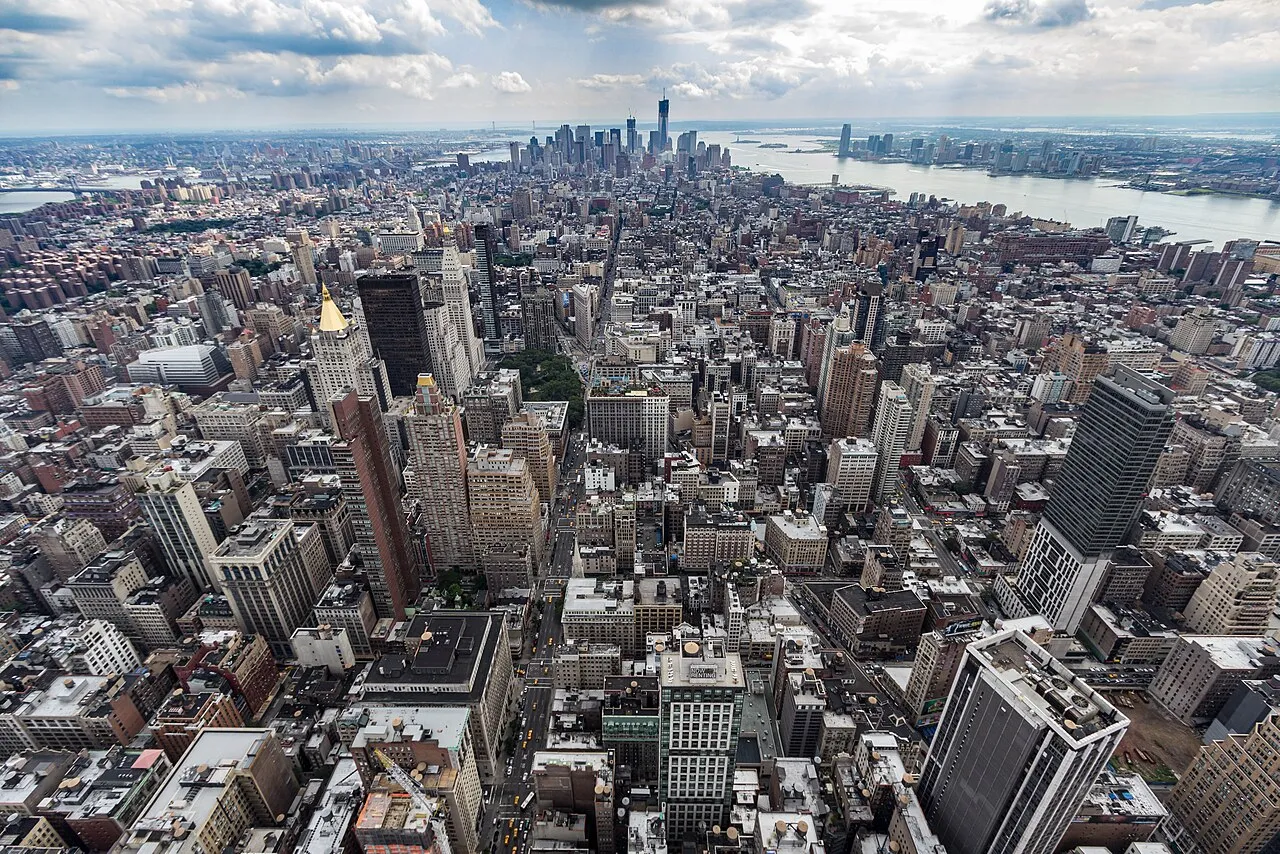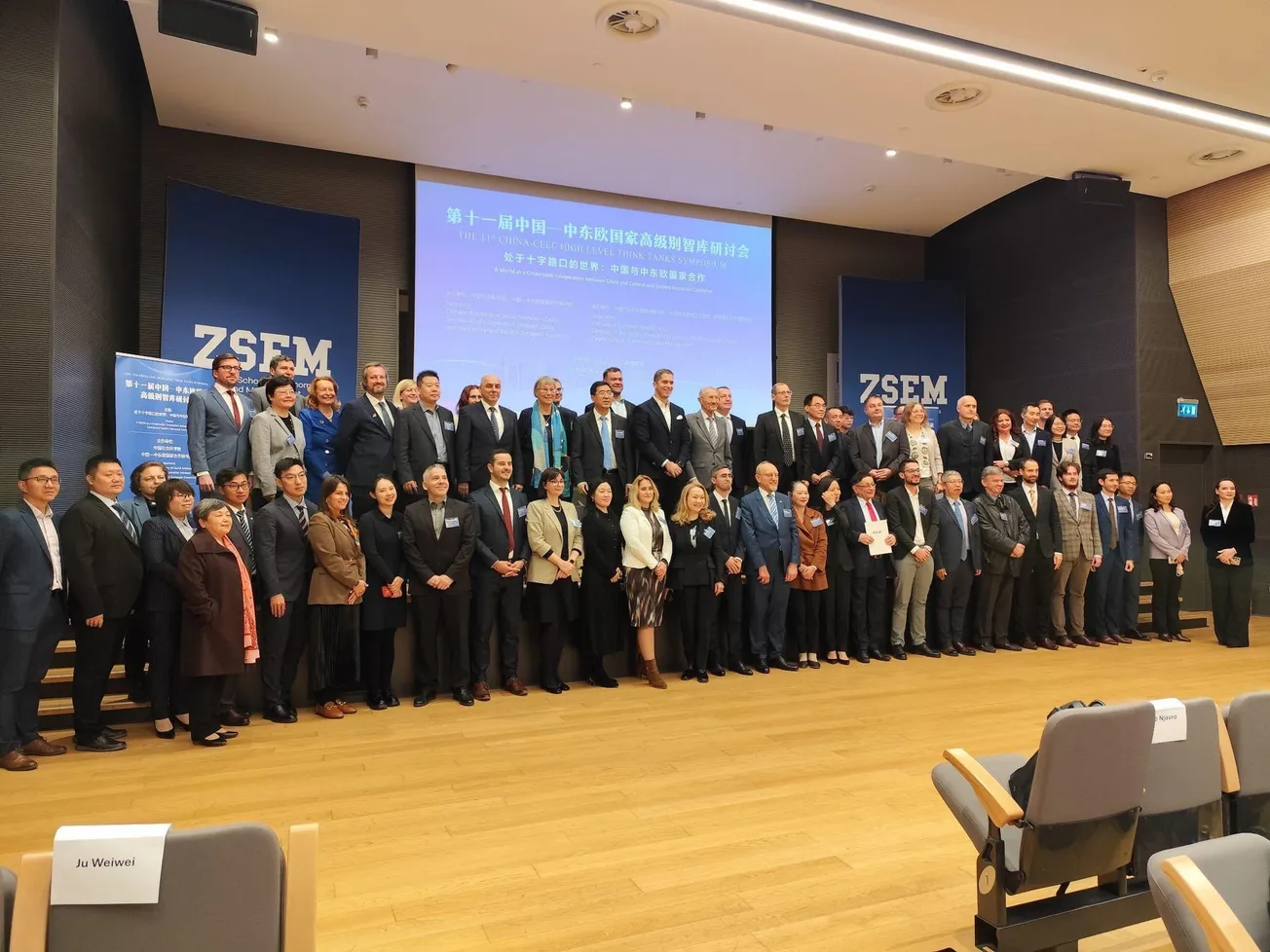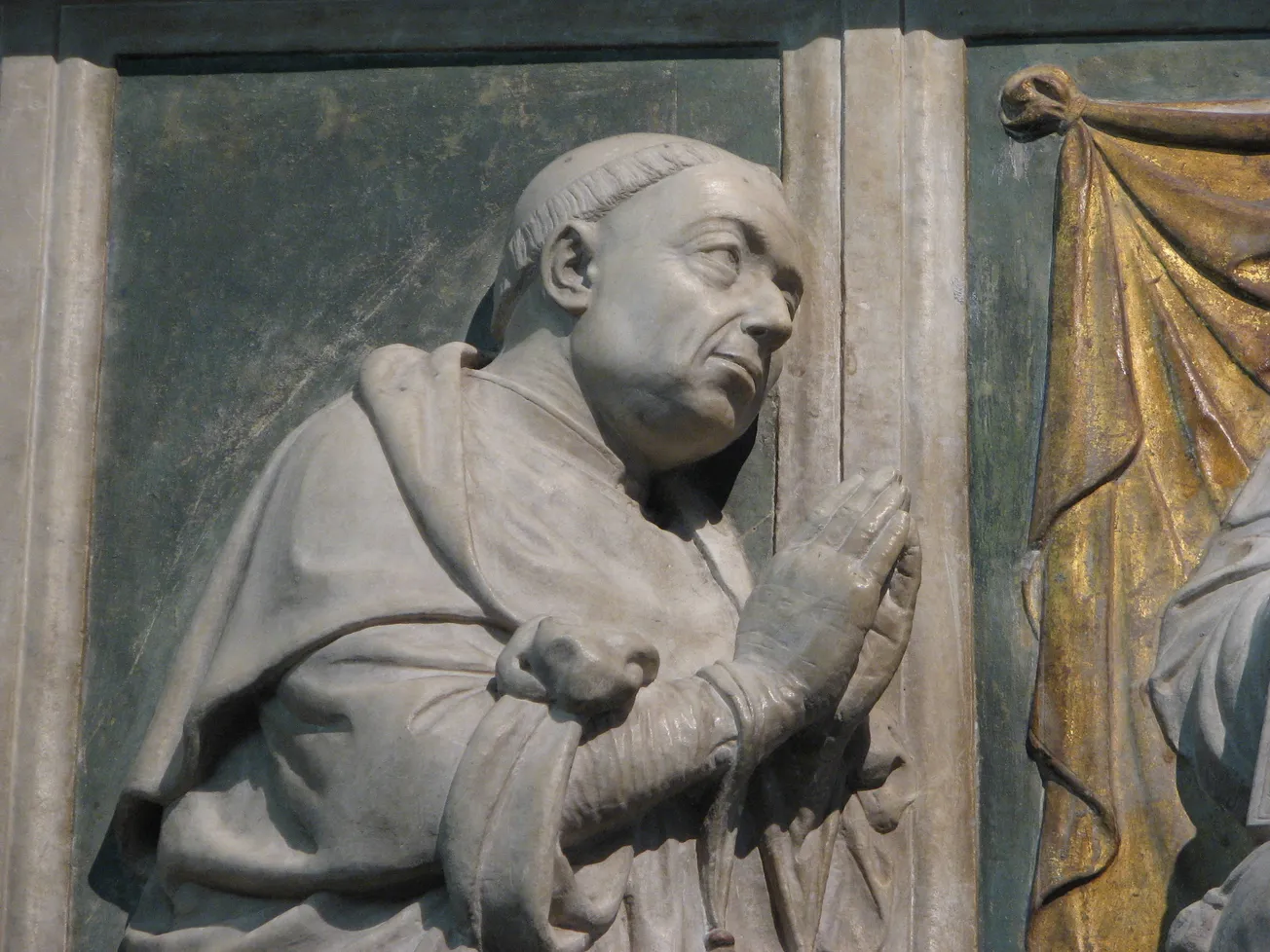Aug. 23—New York State was once renowned for its vibrant and extensive manufacturing, its fecund crops and livestock, a technologically-advanced infrastructure network, a state-of-the-art hospital system, and a living standard sufficient to raise a family whose children were educated to have the potential for increasing the power of their minds.
No more.
LaRouche independent candidate for U.S. Senate from New York, Diane Sare, filed a fresh, first-hand report August 11, that presented, rather than the mush from the media, the harsh reality of the condition of the citizens whose state she would represent in the United States Senate:
Last week I returned from the Niagara County Fair and the Spiedie Fest in Broome County, both in New York. Niagara County includes the City of Lockport, once a thriving industrial hub, and lots of farmers. New York State has lost 3,000 farms over the last five years, and combined with the national collapse of farm income, farm areas are very hard hit. The poverty was evident in both places, with many more people than last year passing by our tables who looked down and out, unkempt hair and teeth missing, or just angry about the injustice they experience first-hand every day.
I spoke with people at the booths for mental health care and drug addiction. They told me that Niagara County was number one in the state for drug overdose deaths, but there is no funding. Aside from being hospitalized, there are only 20 beds in the county with 24 hour supervision, and only 120 beds in what I understood to be group home type settings. The county has over 200,000 people. I was told by someone in Broome County that they are sent patients from Niagara County on a regular basis, but that Broome County facilities are also strained. There are ten-year waiting lists for various kinds of supportive housing….
The people at the drug abuse program table told me that at least one of the state rehabilitation facilities will only admit you if you’re high when you show up—that is, you can’t show up sober and ask for help. This has led to people overdosing in the parking lot. They report the biggest problems for people coming out of rehab are finding affordable housing, and transportation to get to work.
Sare’s comments sharply etch the direction of an economy that is spiraling into economic-cultural breakdown. New York State Gross Domestic Product figures may indicate that the state is growing by 2-3 percent. But underneath, when gauged by a real measure—Lyndon LaRouche’s potential relative population density—it is sharply contracting. The increase of potential relative population density is mankind’s capacity to support successively greater levels of population, each level enjoying greater material well-being and cognitive powers, through man’s discovering new fundamental principles of science and culture, and their application in manufacturing, agriculture, and infrastructure. Instead, the potential relative population density of the U.S. and New York State have collapsed.
Where did New York’s breakdown come from and when did it originate? Hundreds of New York factories are now boarded up or have been blown up. The once fertile farms, especially dairy farms, are disappearing. Hospitals are closed, poverty is rampant, and the spread of fentanyl and cocaine is claiming the lives of increasing numbers of citizens in the prime age range of 16 to 45, who otherwise would be contributing to society. The drug epidemic infests nearly every one of New York State’s 62 counties. The downtowns of major cities, which cannot provide services, are emptying out.
New York’s ongoing breakdown is a microcosm of the nation’s overall physical disintegration and cultural decay. It needs to be studied, and reversed.
Diane Sare’s solution principles and program have the power to halt the crisis, and in tandem with the BRICS process, put New York and America on an expanding trajectory of growth and development, as will be presented below.

Manufacturing Collapses
In August 1971, the City of London–Wall Street axis induced then U.S. President Richard Nixon to take the dollar off the gold reserve system and end the fixed exchange rate system, a tectonic shift that led toward building a global financial bubble. During Columbus Day weekend in October 1979, U.S. Federal Reserve Board chairman Paul Volcker began raising U.S. interest rates, so that by Dec. 19, 1980, when the prime interest rate reached 21.5%, Volcker declared that he was intentionally implementing a policy of “controlled disintegration” of the economy. The U.S. and world economy fractured. In 1982, the Garn-St. Germain Act began the process of deregulating the U.S. banking system.
The New York State Museum reports, “New York State led the nation in manufacturing from 1840 to 1960,” an extraordinary 120 years, the longest any state has led the nation in manufacturing. The top-down changes in policy by Nixon, Volcker, and Wall Steet, wracked New York State.
Let us consider what happened to the cities of Buffalo, Rochester, and Schenectady, which used to resonate across the country as manufacturing hubs that contributed to the physical economy of the nation as a whole.
Buffalo: In 1950, the Western New York city of Buffalo stood as an industrial powerhouse. It was the 15th largest city in the United States, with 581,000 people; it had the second biggest rail center; it had the nation’s largest inland port (the twelfth largest port overall); it was the sixth largest steel producer; and it was the eighth largest manufacturer, according to the 1950 U.S. Commerce Department’s Census. Buffalo’s Bethlehem Steel Lackawanna plant was at one time one of the largest in the world, and employed 20,000 workers in the manufacture of steel. It was the same sort of work happening a few miles away on South Park Avenue along the Buffalo River at the Republic Steel plant. Today, no major steel plants operate in Buffalo (though some smaller steel companies are still in operation).
In Buffalo and the associated Cheektowaga area, total manufacturing jobs, which had numbered over 135,000 in 1950, and which had fallen to 83,300 in 1999, fell to 51,400 by 2019, which is 62% lower than they had been in 1950.
The loss of manufacturing jobs had two effects: first, the loss of these jobs lowered the productive capacity of the state and the nation as a whole; second, steel-making jobs were well-paying, and their loss caused living standards in Buffalo to plunge. Buffalo could neither tax steel-making factories that were no longer producing, nor steelworkers who had been laid off. Accordingly, tax revenues fell. This led to a self-feeding downward spiral: revenues were not available to provide for essential services or improvements in transportation, etc. It became less desirable to live there; and population moved out. By 2022, Buffalo’s population had dwindled to 277,000, from 581,000 in 1950, shrinking by more than half. It had become a ghost of its former self. Further, people just walked away from their homes: as of 2024, Buffalo has 16,000 abandoned homes and, in some neighborhoods, a quarter to one-third of the homes are abandoned.
The specter of poverty was not far behind. The U.S. Census Bureau reports that in 2023, 28% of the city’s population lived below the poverty level, which is more than double the national average of 12.5%.
Rochester: Greater Rochester, another of the once industrial cities in upstate New York, has had serious troubles. In 1970, 152,000 people in the Rochester area worked in the manufacturing sector; by 2024, this number had fallen to slightly more than 60,000 manufacturing workers, a fall of close to 100,000, or 60%. Eastman Kodak used to employ over 5,000 workers in Rochester which is now down to 1,100.
The poverty rate in Rochester is 27.9%, and the child poverty rate, as the section on child poverty below will show, is 41.7%.
Schenectady: In 1975, the number of manufacturing workers living in Schenectady County was 24,331. By 2022, this shrank to 4,448, a decline of 82%. Many of the County’s manufacturing jobs were in Schenectady city, the biggest city in the county. One of the biggest employers was General Electric Company, which at one point employed 30,000 workers in Schenectady, a good portion of whom were manufacturing workers. GE was a dominant part of Schenectady, but no longer.
More than one-fifth of Schenectady’s population lives below the poverty line.
New York City: New York City is not normally thought of as a manufacturing center, but in about 1950, the city had 750,000 manufacturing workers, mostly in the garment and clothing industry, as well as light manufacturing and small machine tool shops. Today, the city’s manufacturing workforce has shrunk to 57,000, a loss of nearly 700,000 workers.

Now consider the arc of the manufacturing employment collapse in New York State as a whole. In 1950, two million New York State workers were employed in manufacturing. As hundreds of manufacturing plants were closed, this plunged to one million workers employed in manufacturing in 1993. Figure 1 demonstrates that, starting in 1999, there were 781,000 New York state manufacturing workers, which sharply contracted to 421,000 in 2023. Thus, there are two measurements. If one starts in 1950, the fall of manufacturing workers in New York State went from 2 million in 1950 to 421,000 today, a fall of 79%. Starting from the manufacturing employment level in 1999 (Figure 1), the fall until today is 46%. Either measuring rod is devastating.
Productive work, with great emphasis on manufacturing, is the means by which the human species produces goods that raise mankind to higher levels of power over nature and increases the potential of man to rise to a higher level of cognitive development. New York State used to produce abundant electricity generators, locomotives, rail equipment, and advanced machine tools. Though some of this is still manufactured in limited numbers, that era has come to a close with a thud.

Figure 1 presents New York’s manufacturing workforce, 1999 through 2023. We present alongside that Figure 2, which shows the sharp increase in New York’s drug overdose deaths for the same years, 1999 to 2023. As one graph plummets, the other graph explodes upwards. Does the reader think there is a causal connection between the two graphs?
Agriculture: Two-Thirds of Dairy Farms Disappear
New York is a very significant agricultural state, possessing a special competence in producing dairy products. The heart of its proficiency is the small family farm. But this small family farm is under attack, as large corporate cartels are creating conditions under which the small family farmer is forced to sell his farm.
In the last five years, New York has lost nearly 3,000 farms. “In New York, there was a loss of 2,788 farms, including 1,865 dairy farms and 363,885 acres of farmland from 2017 to 2022,” reports the U.S. Department of Agriculture in its Census of Agriculture report, as reported by Emily Kenny, who works for the volunteer nonprofit America Corps, and one of her associates Vince Briga. Of the total 2,788 New York farms lost, dairy farms constituted two-thirds of the total.
But the story gets worse. On February 19, 2024, WNYT news station, using data from the same USDA Census of Agriculture report, reported that “half of New York’s dairy farms from a decade ago no longer exist.” Moreover, WNYT stated, “New York State has gone from more than 9,000 dairy farms down to 3,000 over the past 25 years.” The USDA report asserted that rising costs are hurting farmers. “From 2017 to 2022, labor and production costs rose by 50% in the agriculture industry,” reported WNYT, using information from the USDA report. However, farm profit has not nearly increased anything like 50% to cover their costs, which is an irreconcilable problem. This is a wipe-out of the independent dairy farmer, whom the cartels are eager to gobble up.
Christopher Wolf, an agricultural economist at Cornell University, said part of that is due to consolidation of farms, which in plain English means that financier interests, foreign investors, and farm cartel companies are buying out family farmers which have gone into distress. A better word for this process is cartelization. According to Wolf:
With New York being a traditional dairy producing state, the area has a whole range of dairy farms from ones that have been around for many generations to newer ones, but it would tend to be the smaller older farms that are going out.
The preeminence of dairy in New York’s agricultural production is borne out by information provided by the USDA’s National Agricultural Statistical Service, as gathered by the New York Farm Bureau. New York is the leader in all 50 states in production of yogurt, cottage cheese, and sour cream—all dairy products. It is the third largest producer of Italian cheese, the fourth largest producer of total cheese, and the fifth largest producer of milk.
There is an invasion of foreign purchases of New York’s farmland, and, contrary to the claims among the anti-Chinese faction that “China is doing it,” it is actually being done largely by the countries of the British Commonwealth. A Cornell University report published in May of 2024 entitled “Foreign Ownership and Leasehold of Agricultural Land in New York” takes up the question of whether China and/or other “adversary” nations are buying up U.S. farmland. It found that the major holders of U.S. farmland are: Canada (243 entities owning 251,534 acres, constituting 32.7% of foreign held U.S. agricultural land in New York), followed by the British-run Cayman Islands, Denmark, the United Kingdom, and Germany. Canada, the Cayman Islands, and the UK are all members of the British Commonwealth. “No Chinese entities own agricultural land in New York,” the study asserts.
But why are these foreigners swallowing up New York farmland? To improve agricultural output? No, the foreigners are taking out long-term leases, not for farming but for installing wind mills, solar panels, and other renewable energy and resource investments. The Cornell study reveals that, “92.65% of foreign U.S. agricultural landholders invested in wind and solar energy in New York.” Hundreds of thousands of acres of New York farmland are being taken out of food production to instead feed a giant speculative green bubble that installs wind turbines that won’t generate electricity when the wind doesn’t blow, and solar panels that won’t generate electricity when the sun doesn’t shine.
The Infrastructure Debacle
New York State has underfunded and neglected the repair and upgrade of its aged fundamental infrastructure, though a few in the state are trying to partially address the problem.
Lyndon LaRouche, writing on the role of infrastructure platforms, in his 2010 paper, “What Your Accountant Never Understood: The Secret Economy,” underscored infrastructure’s importance:
We should then recognize that the development of basic economic infrastructure had always been a needed creation of what is required as a “habitable” development of a “synthetic,” rather than a presumably “natural” environment for the enhancement, or even the possibility of human life and practice at some time in the existence of our human species.... Man as a creator in the likeness of the great Creator, is expressed by humanity’s creation of the “artificial environments” we sometimes call “infrastructure,” on which both the progress, and even the merely continued existence of civilized society depends.
Noted here succinctly are two basic types of New York’s infrastructure which are in a state of collapse:
Hospitals: In the period 1940-70, New York had a very good hospital system, which was expanded by the 1946 Hill-Burton Act. However, the Mount Sinai Hospital System, a health system run by a group of Wall Street looters, has closed and consolidated numerous hospitals in New York City since its creation in 2013. The predatory Mount Sinai Hospital System is about to close Beth Israel Hospital in New York City. Founded in 1852, the 1,141-bed Beth Israel Hospital is ranked among the top hospitals in the U.S., and is acclaimed internationally for excellence in clinical care.
Since 2000, depending on the source, between 28 and 48 hospitals have been closed in New York State, which is stunning. In addition to this, the Center for Healthcare Quality and Payment Reform reports that 56% of New York State’s 52 rural hospitals are on the verge of closing, a condition which means that their financial health is on life support. Were they to close, rural families might have to travel 50 to 150 miles to get to a hospital; a matter of life and death in an emergency.

In the case of Beth Israel Hospital, which is located on 16th Street and Avenue E in Manhattan, there is no hospital further south in an area covering 400,000 people. If someone has a serious car accident, a heart attack, or stroke, there is no hospital. New York State Assemblyman Harvey Epstein stated:
If the state allows this place to close, and we’ve been asking the state to not allow it to close, it’ll have a reverberation. Likely people will have longer wait times. The ambulances will take longer to get to the hospital. The risk of people dying will go up.
Indeed, deaths will go up. On August 12, Diane Sare held a press conference outside of Beth Israel Hospital, where she denounced the criminal policy of shutting down hospitals, in light of the shortage of hospital beds during the COVID crisis, and called upon others to join her in mobilizing to keep Beth Israel open.
Bridges: New York State is crisscrossed by a network of 17,607 highway bridges. A prodigious 163 million motor vehicles cross these bridges every day. Some of the bridges carry traffic inside the state, some are interstate, and some connect to Canada.
Approximately 9% of New York State’s bridges, or a total of 1,576, are rated “structurally deficient or poor.” A structurally deficient bridge is a bridge that has significant structural or maintenance problems caused by deterioration, damage, cracks, or wear. The Brooklyn Bridge, which was a marvel when built by John Roebling in 1883, is now rated as structurally deficient by the U.S. Highway Administration, which does the rating. In 2007, the Brooklyn Bridge was given a zero, the lowest possible “sufficiency rating” from the federal government. At mid-span, the roadway or superstructure is suspended by short rod suspenders, not wire ropes as most bridges are suspended, and the main cables dip below the roadway and are too close to the main floor beams.
The risk of a serious accident or death is always present.
The New York Department of Transportation rates a bridge structurally deficient from a slightly stricter standpoint. It considers a bridge structurally deficient if it needs “significant maintenance and repair to remain in service and eventual rehabilitation or replacement to address deficiencies.”
The rehabilitation or replacement of bridges is a critical question, as this would require many more tens of billions of dollars than are currently spent. New York and the federal government are spending money for bridges, but it is far from sufficient. In addition, the building of new bridges to address New York’s massive congestion, as well as the technological rehabilitation/upgrade of some of New York’s ports, is a central issue.
The hospital system and bridges exemplify the process. We could have explored two dozen other forms of New York infrastructure, such as water management, or the generation of electricity and its transmission grid, about which EIR will go more into depth in future articles, but the collapse process is the same.
Destruction of Individuals
When an economy develops, by intent, it develops mankind. This is an economy’s purpose. Thus, if the economy is growing, so should man’s ability to raise the productive quality of the economy to higher and higher levels, to increase his cognitive power, and to ennoble his soul.
Here, the New York State physical economy’s failure of the previous half century is most noticeable.

Look at the case of childhood poverty, that is, poverty of children from the ages of 0 to 18. The greater and more intense the real economy’s precipitous decline, the higher childhood poverty has risen, as a proof positive of what is happening. Syracuse has experienced the same type of industrial downturn as Buffalo and Rochester, which are discussed above. A May 2024 report, “New York Children in Need: The Urgency of Lifting Children Out of Poverty,” issued by the New York State Comptroller’s Office, reports that the poverty rate for children under the age of 18, in the year 2020, was 39.8% in Buffalo, 41.7% in Rochester and 45.8% in Syracuse (Figure 3). Another way of putting this is that, for the cities of Buffalo, Rochester, and Syracuse, in what is now the rust belt of New York State, the poverty rate was between 40 and 46%. Among the largest cities in the U.S. with the highest rates of poverty, Syracuse, Rochester and Buffalo, rank second, fifth, and seventh; no other state has three major cities with comparable child poverty rates.
Albany, the capital city of New York, has a child poverty rate of 29.2%; New York City has a child poverty rate of 23.4%

Child poverty is depicted as the condition where a child lacks the resources to meet its basic needs, such as food, water, shelter, education, and health care. This is usually because the child lives in a household that is living below the poverty level.
But the situation is far worse than the official definition. This is a condition where a child may not have enough to eat, or a roof over his or her head. Though during the school year, poor students can get lunch and sometimes breakfast at school, that doesn’t include the dinner meal, nor over the weekend the meals children need to eat. Real food inflation has been skyrocketing over the last three years. There are 1,557 food pantries and 327 soup kitchens in operation in New York State, for a total of 1,884 emergency food providers. The food pantries provide tens of millions of pounds of food per year. But on average, they can only provide enough groceries to feed a family of three or more people three meals a day, for three days. That leaves many days when families do not get food from food pantries, and their family income is insufficient to buy sufficient food.
With respect to housing, the average rent for a two bedroom apartment in the U.S. is $1,792 per month ($21,500 per year), according to Apartments.com. Families in poverty can’t remotely afford that, so many live in run-down housing, in shelters, or are homeless. According to Advocates for Children of New York, “More than 119,000 NYC public school students—roughly one in nine—experienced homelessness during the 2022-23 school year, the eighth consecutive year in which more than 100,000 public school students were identified as homeless.”
Children who are sleeping in dangerous shelters or under bridges are not going to perform well in school. This is not a condition conducive to learning. The growth of a productive economy requires the raising of a productive labor force, of growing cognitive powers, capable of mastering the higher and higher technologies which are needed. New York is going in the opposite direction; millions of children are being destroyed.
Drugs Wiping Out Thousands of New Yorkers
New York State’s drug epidemic is relentless and ever growing. Figure 2 demonstrates that New York’s drug overdose deaths have surged from 959 individuals in 1999 to 6,358 in 2023, an explosive increase of 6.6 times. Since 1999, nearly 60,000 individuals, most of them under 50 years old, have lost their lives, many while lying on filthy bathroom floors with syringes sticking out of their arms, or after vomiting and suffering seizures in a back alley.
Now look back at Figures 1 and 2 together, which show, respectively, the collapse of New York State manufacturing jobs, and the surge of New York drug overdose deaths. They are connected as cause and effect. The same goes for the take-down in agriculture. The cause of New York’s drug overdose epidemic is not to be found by looking at a case-study of one addict at a time. The real cause is far above the individual addict, in the whole which engulfs him or her. Most importantly, start with the breakdown of manufacturing, in which New York State suffered the elimination of 1.58 million manufacturing jobs between 1950 and 2023. This engendered: 1) the huge loss of productive output for New York and the nation; 2) the loss of income for the workers, as manufacturing jobs are generally well-paying; 3) the loss of revenue for the state, as the manufacturing workers and factories shut down could not be taxed; and 4) very importantly, the loss of a productive sense of personal-social identity, in which the individual employed in manufacturing correctly sees him or herself as productively contributing to the world. This sense of alienation also leads to despair, affecting society as a whole.
The deliberate take down of manufacturing and agriculture, begun with President Nixon’s Aug. 1971 decision to take the dollar off the gold reserve standard, further took hold with the imposition of the sex-rock-drug counterculture, which said “anything goes,” eroding the human sense of identity. A Classical culture of beauty was replaced by ugliness and depravity. The City of London–Wall Street banks, which garnered trillions of dollars of profit, provided the financial grid for drug money laundering, and developed an international pipeline to supply plentiful amounts of drugs. And as if that wasn’t enough, marijuana and other drugs have become easier to get as state after state has bowed to the pressure to legalize drugs. Into this spun web, the despairing and the naive are lured.
Each time one sees a factory or farm shut down, each time a hospital is closed, one sees the basis for the drug overdose epidemic. The destruction of manufacturing, agriculture, and other sectors since 1971 and before, reduces New York and the United States as effective economic powers.


As said above, the New York manufacturing loss and drug overdose deaths are a mirror of, and emanate from the same process as is happening in the United States as a whole. Figure 4 shows the U.S. lost 5.8 million manufacturing jobs, going from 17.3 million manufacturing jobs in 1999 to 11.5 million jobs in 2011, before barely recovering 1.4 million manufacturing jobs by 2023. Simultaneously, Figure 5 shows a 5.5-fold increase in U.S. drug overdose deaths during the same period, surging from 19,500 per year in 1999 to 107,500 per year in 2023.
Diane Sare’s Pursuit
New York and the United States need to be rebuilt.
Of all candidates running for elected office, including that of the President of the United States, only the LaRouche candidates Diane Sare and Jose Vega (NY-CD15) are addressing the existential nature of the crisis. On her U.S. Senate 2024 palm card, Sare states:
Nuclear war cannot be won and must never be fought. End NATO. Stop spending billions arming Ukraine, Israel, and Taiwan, and negotiate for peace. Ceasefire in Gaza now! Retool industrial corporations to build high speed rail, nuclear power plants, water management systems and several new American cities. China and Russia are not our enemies.
Sare adds, “The minds of our children are our greatest resource. Return to a Classical education curriculum in our schools.”
Sare is a unique candidate: running for U.S. Senate from New York against incumbent Kirsten Gillibrand, and at the same time, speaking for the United States as a whole, and the interests of the office of the U.S. Presidency.
Sare has proposed to expand and improve the agro-industrial base of New York, as well its systems of hospitals, water, and power supply. However, Sare insists this be done from the standpoint of rebuilding both New York and the United States as a whole. For example, a program to build 42,000 miles of high-speed rail in the U.S., with its New York component, or a mission to explore Mars, can only be implemented in such a way. But, as Sare puts forth in her campaign pamphlet America’s Next Fifty Years: The United States Joins the Belt and Road, a good part of her program involves the United States breaking with its currently British-dictated policies and working with the BRICS to form a new strategic and development global architecture, as Schiller Institute founder Helga Zepp-LaRouche has advocated.
New York should and could create 1.58 million new manufacturing jobs in the construction of such projects, matching those that were lost over the past 50 years. In addition, a revived New York manufacturing sector will be able to export its advanced capital goods and science-intensive machine tools to reconstruct the world. However, a successful policy will not simply aim to rebuild New York and the U.S. back to the level they were before, but will chart a course for at least the next 50-100 years into the future.
As Sare states:
When one is lost “in a dark wood,” the way to get out of it is not to sit down and itemize every poisonous insect or snake which might cross your path—of course you seek to avoid them—but you must set upon a course of action by which to free yourself from the hazardous situation. In the case of the United States today, this means having a vision, as Lyndon LaRouche used to say, of what the world will look like 50 years after you’re dead. Imagine how it will look (if it will even exist) on the current trajectory, and then imagine how it should look. What should life be like for a child born 50 years after you’re gone—a child whom you love. Then work to make the future conform to that vision. That’s what I am doing.
The authors would like to thank Suzanne Klebe for her help in the research for this article.







